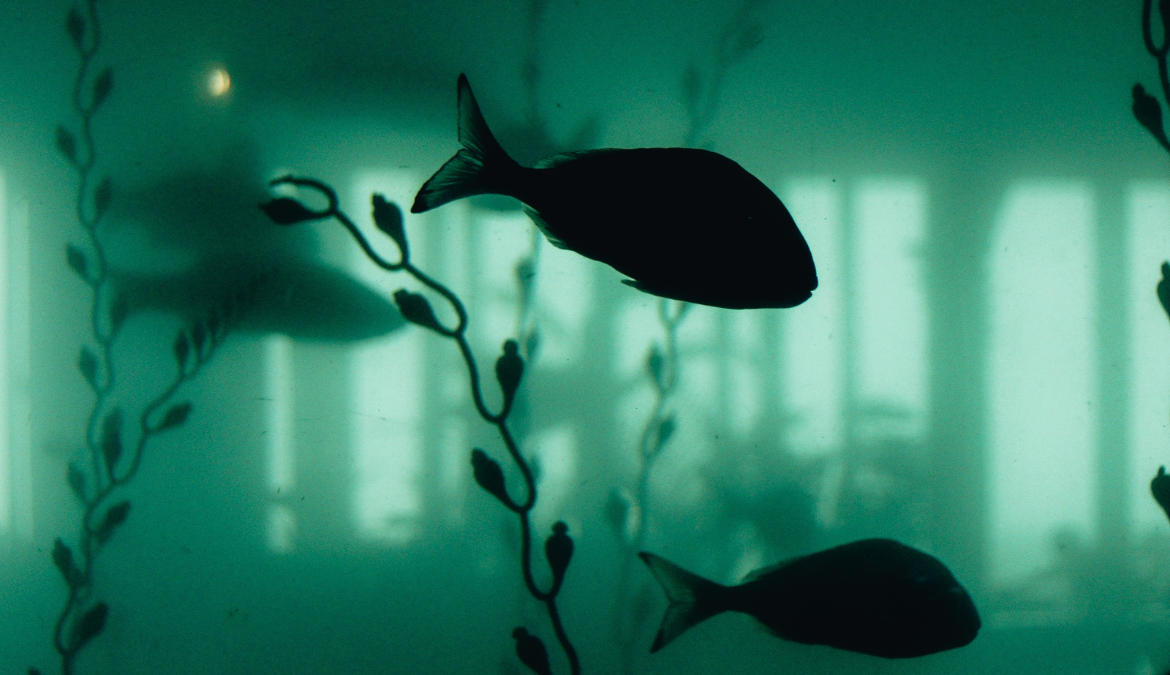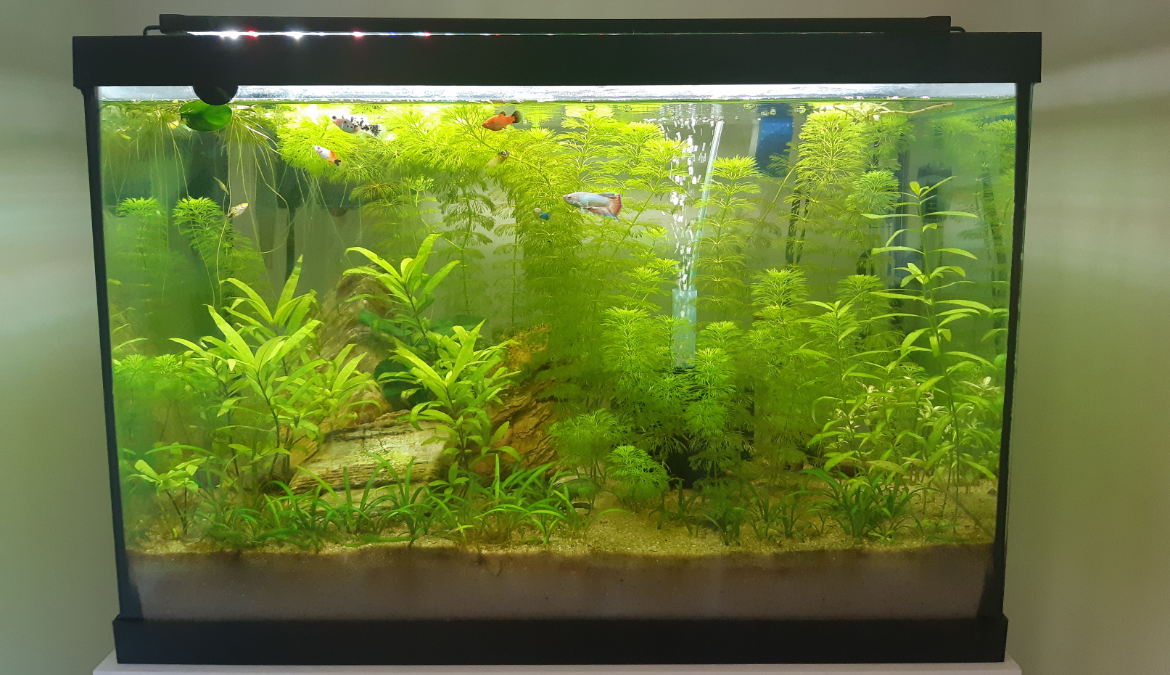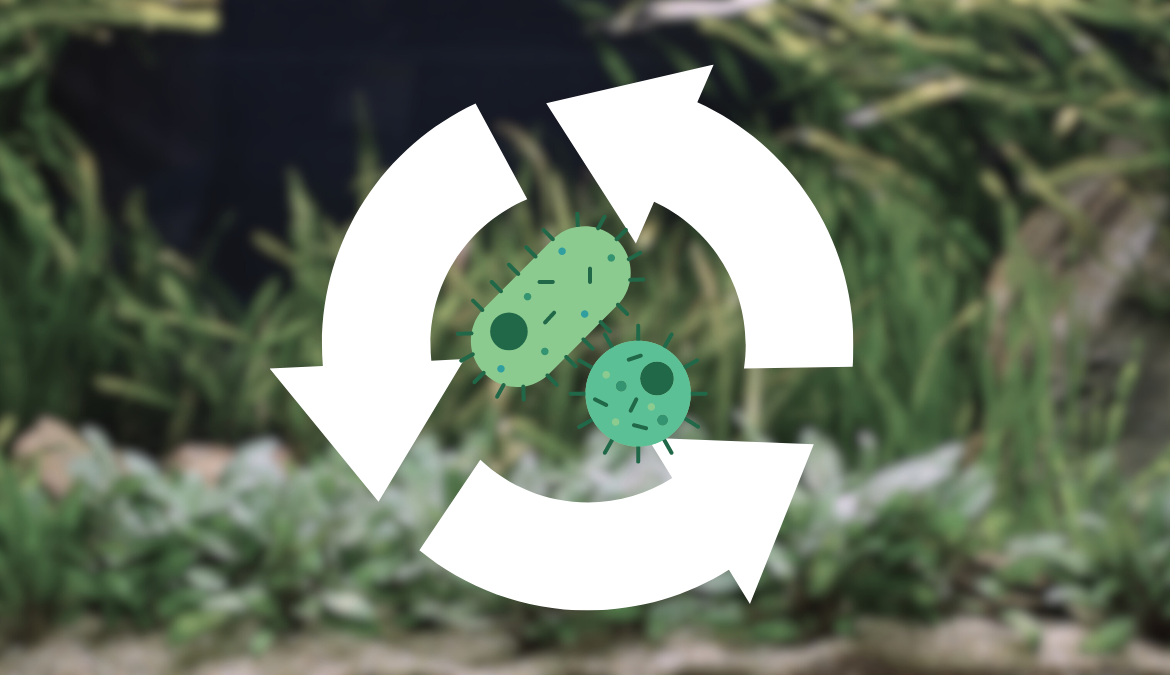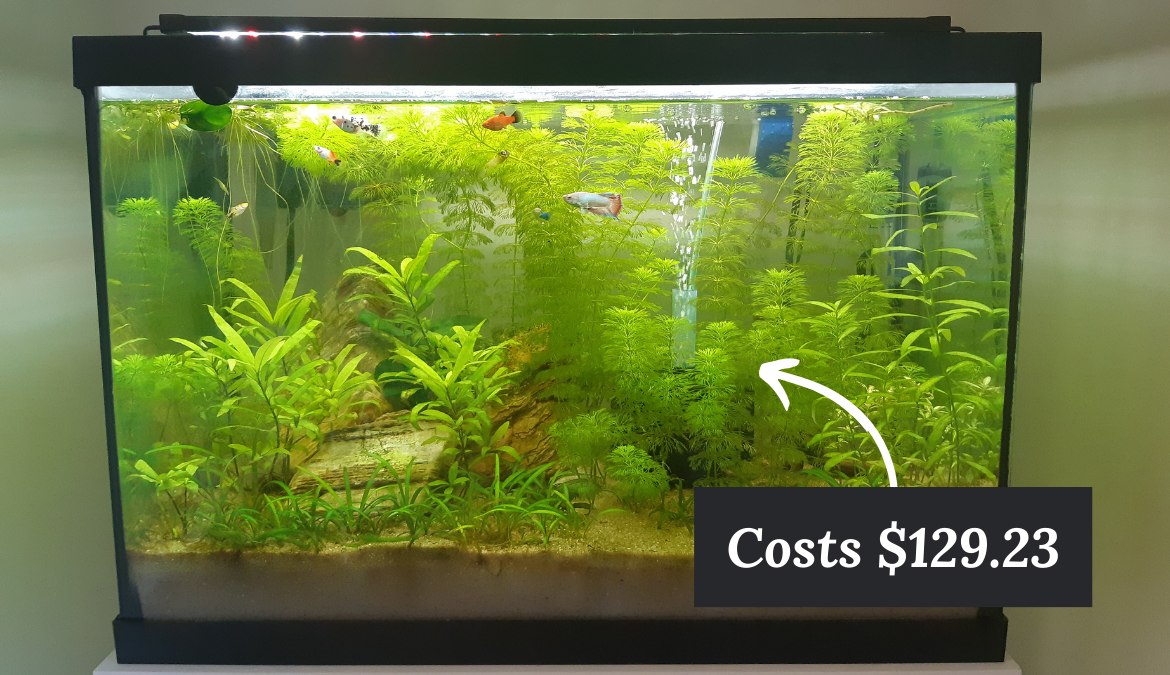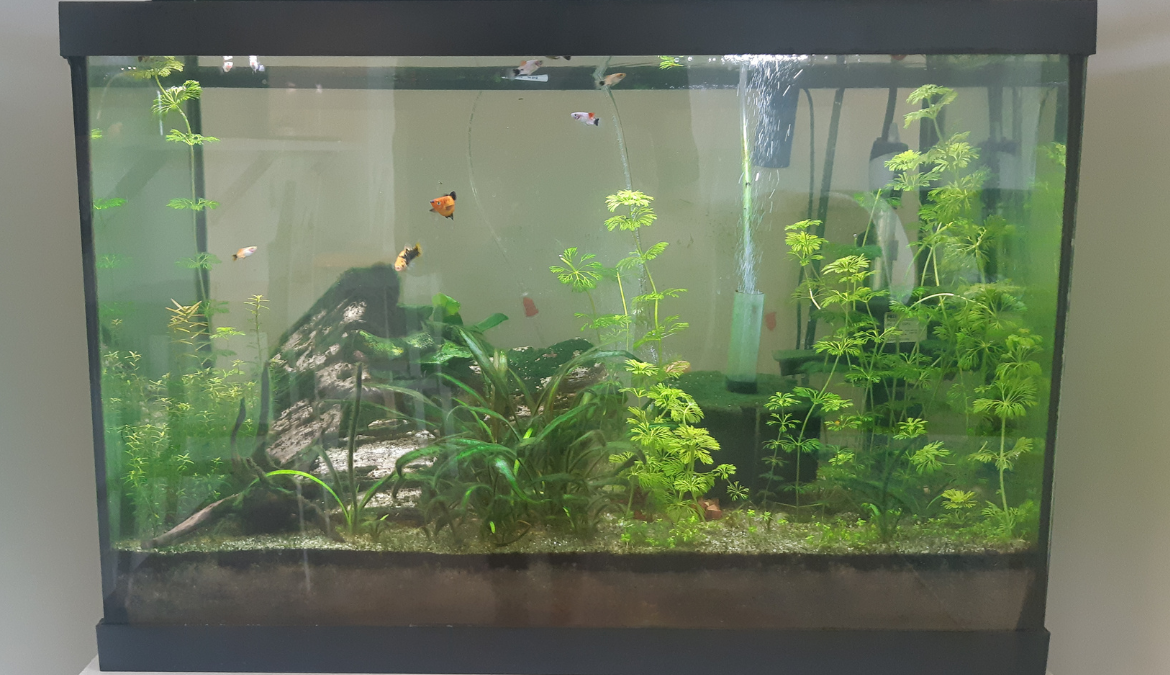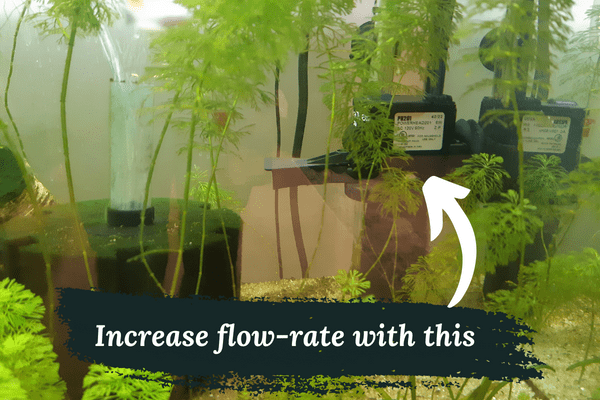You can cycle a planted aquarium in as little as 2-3 weeks by using nutrient-rich substrate, floating plants, sponge filters, oxygen, and ammonium chloride. A faster method involves using a seeded filter or substrate from another estalished tank.
Every aquarist wants to cycle their tank as quickly as possible. There’s nothing worse than having to wait weeks for yoru aquarium is finally safe to add fish.
Luckily, there are some easy methods to speed up the cycling process that I’ve learned through my years of building planted aquariums. Follow these steps to get yoru tank started in about two weeks:
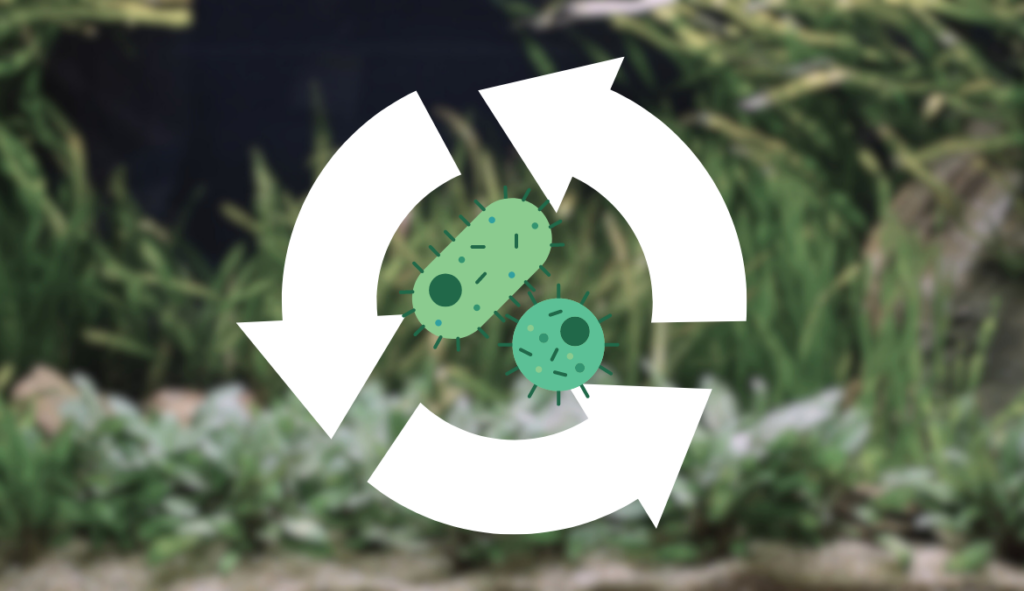
Contents
- 1 How plants speed up the cycling process
- 2 Cycling Step 1: Set Up Your Tank
- 3 Cycling Step 2: Starting the Nitrogen Cycle
- 4 Cycling Step 3: Monitoring the Cycle
- 5 Cycling Step 4: Handling Fluctuations
- 6 Cycling Step 5: Introducing Livestock
- 7 Common Mistakes and Solutions
- 8 What is Cycling?
- 9 The science of an aquarium nitrogen cycle
- 10 FAQs
- 11 Sources
How plants speed up the cycling process
Cycling can be expedited by the presence of plants as they consume ammonia directly, and their root systems offer a place for beneficial bacteria to colonize. This means that cycling a planted aquarium is relatively quick compared to a standard aquarium.
Cycling Step 1: Set Up Your Tank
Choosing Substrate and Setting Up Plants
It is crucial to choose a nutrient-rich substrate that supports healthy plant growth and is suitable for the specific plants I intend to use in my aquarium. These nutrients also add a source of ammonia which will help you cycle yoru tank more successfully than an inert substrate with no nutritional value.
Some popular commercial substrate options include ADA Amazonia and Fluval Stratum. I prefer organic garden soil or organic potting soil for its dense nutrients, allowing my plant roots to access them efficiently.
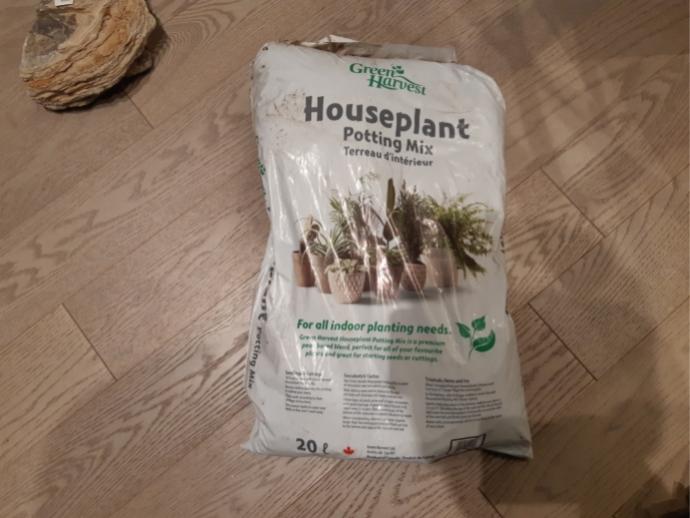
Soil needs to be capped with a layer of sand or gravel though to prevent it from leeching too many nutrients into the water column.
Once the substrate is in place, I proceed to set up my aquatic plants. It’s essential to properly clean and trim the plants before planting them in the substrate. Plant them densely!
Filling the Tank and Initial Water Treatment
After setting up the plants and substrate, I move forward with filling the tank with water. It’s crucial to slowly add the water to avoid disturbing the substrate and uprooting the plants. I pour the water gently over a plate or a plastic bag, which helps to minimize disruptions.
Once the tank is filled, I take care of the initial water treatment by using a quality water conditioner (dechlorinator) to remove any harmful chemicals like chlorine from the tap water that would otherwise kill beneficial bacteria that cycle the tank!
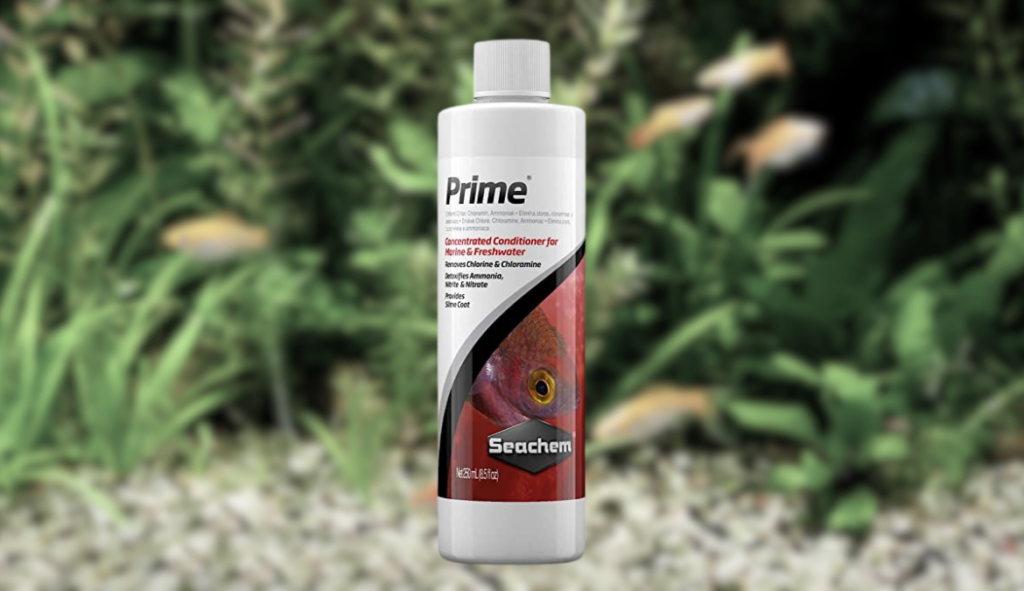
Before turning on the equipment, it’s necessary to double-check the proper installation of the filter, heater, and other devices according to the manufacturer’s instructions. When everything is set, I turn on the devices, making sure they are working correctly.
I prefer using a sponge filter as it offers an ideal environment for the beneficial bacteria to flourish. This is because the sponge holes cause it to have a large surface area for bacteria to grow on.
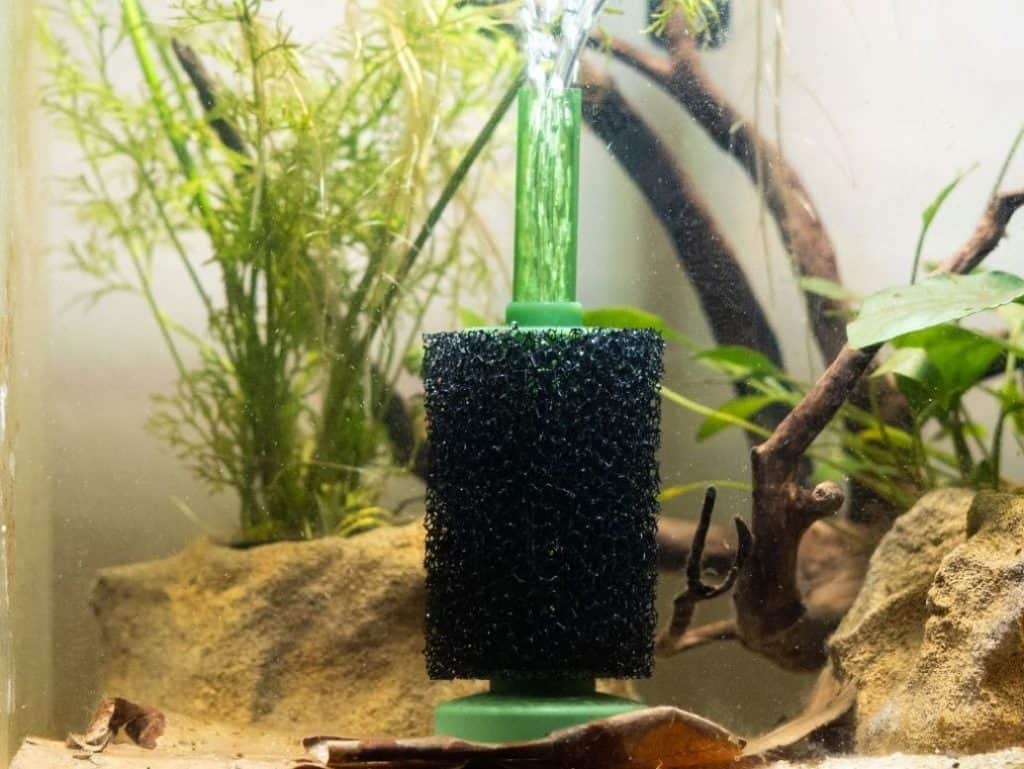
Cycling Step 2: Starting the Nitrogen Cycle
The Role of Ammonia in Starting the Cycle
The Nitrogen Cycle’s first stage begins with ammonia. It’s essential to get ammonia in your tank. In established tanks, ammonia is produced by fish waste and decomposing plant matter, providing food for nitrifying bacteria.
But at first, you won’t have either of these ammonia sources to initiate bacteria colonization.
Therefore, we need to add a temporary source of ammonia to get things started. I like to use Fritz Ammonium Chloride:
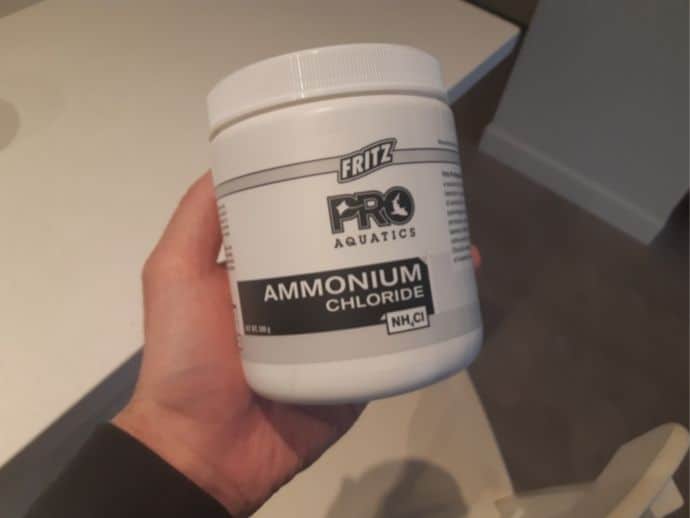
In my experience this has been the most reliable method for quickly establishing a planted tank cycle. This product is aquarium-safe pure ammonia.
Note: Make sure you cycle your tank before adding fish as the cycling process will have periods where the ammonia and nitrite levels are too high to fish to live.
When using ammonium chloride, I add around 1/10th of a teaspoon at a time, mix, wait a few minutes and then use an ammonia liquid test kit to confirm the ammonia concentration.
I try to get it to roughly 1ppm to begin with. Too much higher than this will actually inhibit the beneficial Nitrosomonas bacteria from colonizing.
I then test my ammonia level every day until I start noticing it reducing from 1ppm down to eventually 0ppm. When this happens, add more ammonium chloride to get the concentration up to 1ppm again.
Repeat this process until your tank is able to fully convert 1ppm of ammonia into 0ppm ammonia and 0ppm nitrite in less than 24 hours.
Tips to Kickstart the Nitrogen Cycle
To get the Nitrogen Cycle started in your low-tech planted tank, consider these tips:
- Introduce nitrifying bacteria: You can add bottled nitrifying bacteria to help speed up the cycle. These bacteria will colonize the surfaces of your tank and jumpstart the conversion of ammonia to nitrite and then to nitrate. You can purchase bottle from many local fish pet stores. I’m on the fence whether or not these are effective or not. But I did use bottled bacteria when I successfully cycled my tank in 16 days!
- Use dechlorinated water: Tap water usually contains chlorine, which can harm the beneficial bacteria you’re trying to establish. Make sure to use a water conditioner to neutralize chlorine and make it safe for your plants and bacteria.
- Maintain consistent water parameters: Keep the water temperature and pH within the ideal range for nitrifying bacteria. They prefer temperatures between 64-86°F (18-30°C) and a pH of 7-8. Stability is key to encourage their growth and colonization.
- Monitor ammonia, nitrite, and nitrate levels: Regularly test your tank water to check if ammonia is being converted into nitrite and, ultimately, nitrate. This will help you know when the nitrogen cycle is complete and it’s safe to introduce fish.
By following these tips, you’ll facilitate the nitrogen cycling process in your low-tech planted tank and create a healthy environment for your fish and plants. Remember to be patient, as cycling can take several weeks to complete, but your tank will be well on its way to becoming a thriving ecosystem.
Perform partial water changes when nitrite levels exceed 5ppm
Performing partial water changes (approximately 25% of the tank volume) will help control nitrite, and nitrate levels while preventing harmful spikes.
You will notice that about 75% of the way through your cycling process that nitrite will begin to spike incredibly high. Your nitrite test kit will likely exceed the maximum reading.
Similar to ammonia, high nitrite concentrations can actually kill your beneficial bacteria so it’s important that you measure both your ammonia and nitrite levels each day and do water changes when needed.
Cycling Step 3: Monitoring the Cycle
Tracking Nitrogen Levels
In this step, I focus on monitoring the nitrogen levels in my low-tech planted tank. It’s essential to track ammonia, nitrite, and nitrate levels because these compounds will give me an insight into the progress of my cycle.
Initially, I should observe a slow decrease in ammonia levels for about 7-10 days, followed by a rise in nitrite levels.
Eventually, you may find that your ammonia levels decrease almost completely within 24 hours, while your nitrite levels remain very high. This is normal as the nitrite oxidizing bacteria are delayed.
Once I see a decrease in both ammonia and nitrite levels and an increase in nitrate levels, I know my tank is close to being fully cycled.
To make the process easier, I check my water quality regularly, at least once every other day but preferably once per day. This ensures that I won’t miss any crucial changes in nitrogen levels and allows me to make adjustments if needed.
Tools for Monitoring the Cycle
In order to accurately track the nitrogen levels in my low-tech planted tank, I use a reliable test kit, such as the API Freshwater Master Test Kit or similar products. These test kits provide accurate results and allow me to measure ammonia, nitrite, and nitrate levels. I prefer liquid test kits over test strips, as they tend to give more precise readings.
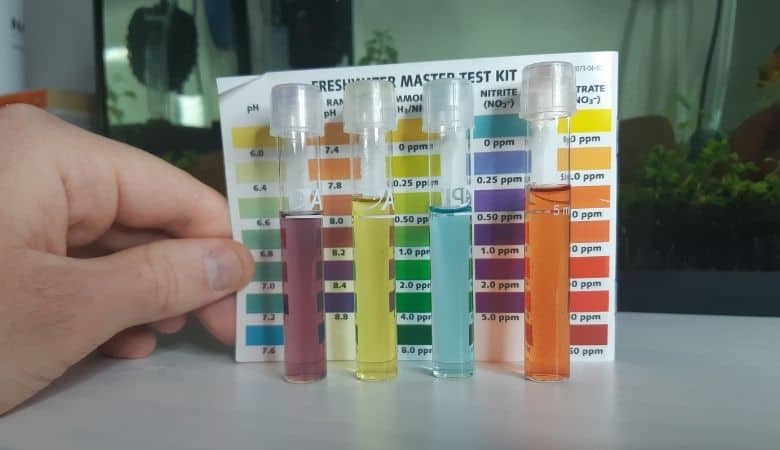
Additionally, I keep a thermometer handy to monitor the temperature of my tank. Maintaining a stable temperature is crucial to support the beneficial bacteria growth needed for cycling.
Cycling Step 4: Handling Fluctuations
Handling Ammonia and Nitrite Spikes
During the cycling process, it’s common for me to experience ammonia and nitrite spikes. These spikes can be harmful to my tank’s inhabitants, so it’s important for me to monitor these levels closely.
Using reliable test kits, I keep track of the ammonia and nitrite levels in the tank regularly, especially during the initial stages of cycling. If I notice any significant spikes, I take immediate action to address the issue and prevent toxic conditions in the tank by doing a partial water change.
Cycling Step 5: Introducing Livestock
When to Add Fish and Invertebrates
At this point in the cycling process, you should have a stable, low-tech planted tank with healthy plants and minimal algae growth. You’re now ready to introduce your chosen livestock, such as fish, shrimp, and snails. To ensure their well-being and a smooth transition, keep the following tips in mind.
The water parameters should also have stabilized by this time, with ammonia and nitrite levels at 0 ppm.
When adding fish and invertebrates, it’s best to start with hearty species that can tolerate varied water conditions and temperature changes. Some examples include cherry shrimp, zebra danios, and various types of snails.
Gradually introduce more sensitive species like cardinal tetras or dwarf cichlids as the tank matures and you gain more experience in maintaining its balance.
Remember:
Adding too many fish many increase the bioload beyond what your beneficial bacteria are capable of removing. It’s best practice to add only a few fish at a time.
Once your fish are in the tank you should NOT continue adding ammonia. The fish will now be the tank’s source of ammonia as they produce waste and as dead plant leaves decay.
Common Mistakes and Solutions
Common Pitfalls During the Cycling Process
Algae
One common mistake I see during the cycling process is the appearance of algae. Algae can be caused by various factors, such as excess lighting, overfeeding, or insufficient cleaning
To prevent algae growth, I recommend keeping your lighting on a timer and not exceeding 8 hours of light per day. Make sure to remove any uneaten food and perform regular water changes.
Filtration
Choosing the wrong filter can lead to complications during the cycling process. It’s essential to select a filter with adequate filtration capacity for your tank setup.
I find that beginners often underestimate the importance of proper filtration. To avoid this pitfall, make sure to research and choose the right filter for your tank size and bioload.
Heater
Maintaining a consistent temperature during the cycling process is crucial for beneficial bacteria to nest and grow. I’ve seen beginners neglect to use a heater or choose one that’s not appropriate for their tank setup.
Select a reliable heater to maintain a stable temperature in your tank and prevent potential issues with the cycling process.
What is Cycling?
“Cycling” is the process of growing and stabilizing colonies of beneficial bacteria that eliminate toxic forms of nitrogen in an aquarium, such as ammonia and nitrite. This is important in an enclosed environment like an aquarium where waste can quickly accumulate and harm fish.
How does the nitrogen cycle work?
To understand the nitrogen cycle, let’s break it down into a few key steps:
- Ammonia Production: Fish waste, uneaten food, and decaying plants produce ammonia, which is toxic to fish and aquatic life.
- Nitrite Conversion: Beneficial nitrifying bacteria convert ammonia into nitrite, which is also harmful to fish but is an essential step in the process.
- Nitrate Conversion: These bacteria further break down nitrite into nitrate, which is less toxic and can be absorbed by plants and removed through water changes or denitrifying bacteria.
This process ensures that toxic compounds are naturally converted to less harmful forms, providing a safe environment for fish and other aquatic life.
How do you know when an aquarium is cycled?
An aquarium is “cycled” when it contains 0 parts-per-million (ppm) of both ammonia and nitrite. This means that enough nitrifying bacteria have grown to oxidize the amount of ammonia and nitrite the tank produces.
You can measure ammonia and nitrite levels using a liquid test kit, such as the Freshwater Master Test Kit from API:
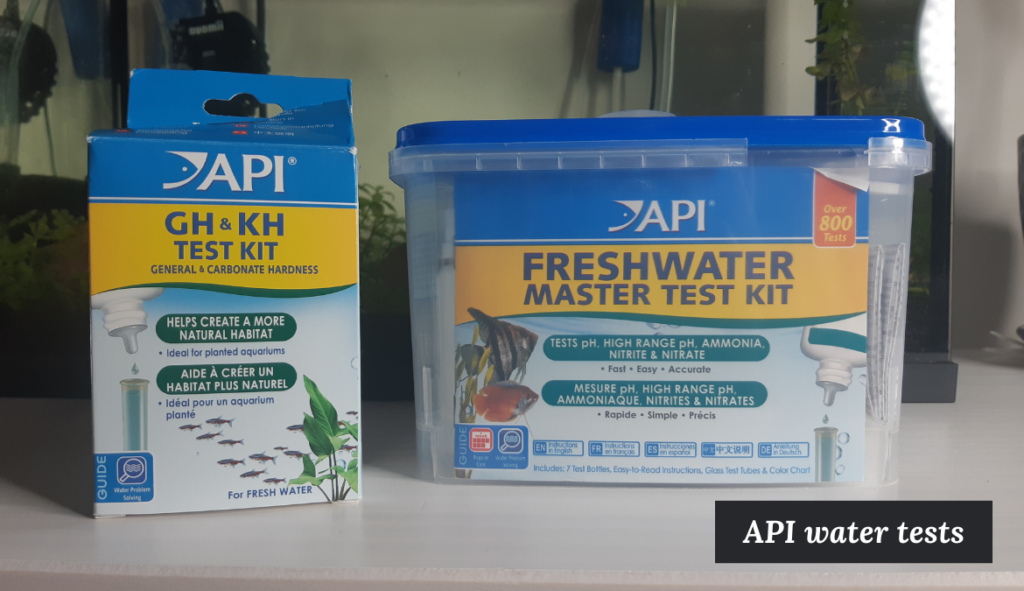
How long will an established cycle last?
A cycled tank will continue to successfully eliminate all ammonia and nitrite as long as the bioload does not increase and the water parameters continue to be suitable for sustaining bacterial life.
The “bioload” refers to biodegradable waste such as excess fish food, decaying plant material, and fish waste. These materials will decay and produce ammonia.
So your tank’s bioload would increase if you added a bunch of new fish to your tank, for example. The bacteria colony would have grow to a size that’s just large enough to remove the previous toxins from the tank. In this case, a period of time would pass where the bacteria increase in population to accomodate to the inceased bioload.
This is why it’s important that you do not introduce too many new fish at once.
The science of an aquarium nitrogen cycle
Oxidation and reduction
Oxidation and reduction, often collectively referred to as redox reactions, are fundamental chemical processes that involve the transfer of electrons between substances.
In an oxidation reaction, a molecule, atom, or ion loses electrons. In contrast, in a reduction reaction, a molecule, atom, or ion gains electrons. These reactions always occur together, meaning when one substance is oxidized (loses electrons), another substance is reduced (gains the lost electrons).
The substance that is oxidized is called the reducing agent, and the substance that is reduced is called the oxidizing agent.
For example:
The oxidation of ammonia to nitrite by Nitrosomonas involves two main steps, each involving electron transfer, which are fundamental to redox (reduction-oxidation) reactions.
In these processes, one substance is reduced (gains electrons), and another is oxidized (loses electrons).
Here’s a more detailed look at the two steps:
Ammonia to Hydroxylamine: In this step, ammonia (NH3) is oxidized to hydroxylamine (NH2OH). The ammonia molecule loses electrons (is oxidized) while the oxygen molecule gains electrons (is reduced).
The enzyme facilitating this reaction is ammonia monooxygenase, which catalyzes the addition of an oxygen atom from O2 to the ammonia molecule.The oxygen atom, in gaining electrons from ammonia, gets reduced.
Here is the electron flow represented:
NH3 -> NH2OH + e- (Ammonia loses an electron, so it’s oxidized)
O2 + 2e- -> O2- (Oxygen gains electrons, so it’s reduced)
Hydroxylamine to Nitrite: In this second step, hydroxylamine (NH2OH) is oxidized to nitrite (NO2-) by the enzyme hydroxylamine oxidoreductase.
The hydroxylamine molecule loses four electrons, which are taken up by water molecules, transforming them into hydroxide ions (OH-) and protons (H+).
Here is the electron flow represented:
NH2OH -> NO2- + 4e- (Hydroxylamine loses electrons, so it’s oxidized)
2H2O + 4e- -> 4OH- (Water gains electrons, so it’s reduced)
Nitrosomonas vs. Nitrobacter
Nitrosomonas and nitrobacter are strains of beneficial bacteria that eliminate toxic ammonia and nitrite from aquariums and other aquatic environments. There are many strains of bacteria that play important roles in aquarium ecosystems but these are the two most commonly cited due to their role in the nitrogen cycle.
Nitrosomonas: This is an ammonia-oxidizing bacteria (AOB), which means it converts ammonia (NH3) into nitrite (NO2-). This happens in two steps. First, the enzyme ammonia monooxygenase oxidizes ammonia to hydroxylamine (NH2OH). Then, another enzyme, hydroxylamine oxidoreductase, converts NH2OH into nitrite. This can be represented by the following equations:
NH3 + O2 -> NH2OH + H+ + H2O (catalyzed by ammonia monooxygenase)
NH2OH + H2O -> NO2- + 5H+ + 4e- (catalyzed by hydroxylamine oxidoreductase)
Nitrobacter: This is a nitrite-oxidizing bacteria (NOB). It takes the nitrite produced by Nitrosomonas and converts it into nitrate (NO3-), which is less toxic to aquatic life. This process is catalyzed by the enzyme nitrite oxidoreductase. This process can be shown as:
NO2- + H2O -> NO3- + 2H+ + 2e- (catalyzed by nitrite oxidoreductase)
In this way, Nitrosomonas and Nitrobacter work together to detoxify ammonia, which is harmful to fish and other aquatic creatures, and convert it into a less harmful substance. This is a crucial part of the nitrogen cycle in an aquarium and is vital for maintaining a healthy and safe environment for the aquarium’s inhabitants.
It’s worth noting that there are also other strains of bacteria that can perform these functions, but Nitrosomonas and Nitrobacter are among the most commonly discussed in the context of aquariums.
Other bacteria and microorganisms and their role in an aquarium
While many aquarists are familiar with Nitrosomonas and Nitrobacter, there are many other strains of bacteria that help maintain a sustainable aquarium ecosystem for us.
For example:
Methanomonas methanica is a type of bacteria that belongs to a group of organisms known as methanogens. Methanogens are archaea, a domain of microorganisms distinct from bacteria and eukaryotes, and they are known for their ability to produce methane as a metabolic byproduct.
In an aquarium environment, methanogens like Methanomonas methanica typically thrive in anaerobic (oxygen-free) conditions, such as deep within the substrate or inside filter materials. They play a role in the breakdown of organic matter, specifically by converting organic carbon compounds into methane (CH4), a process known as methanogenesis.
Thiobacillus is a genus of bacteria known for its role in the sulfur cycle. These bacteria are chemolithotrophs, meaning they gain energy by oxidizing inorganic compounds, in this case, sulfur compounds.
In an aquarium setting, species of Thiobacillus are involved in the oxidation of sulfide, sulfur, and thiosulfate to sulfate. This is important because hydrogen sulfide (H2S), which can be produced in anaerobic conditions in the substrate, is toxic to many forms of aquatic life. By oxidizing these sulfur compounds, Thiobacillus helps to detoxify environments where sulfides might accumulate.
Psuedomonas are capable of denitrification, which is the conversion of nitrate to nitrogen gas (N2). This can be particularly useful in lowering nitrate levels in the aquarium, as high levels of nitrate can be harmful to certain fish and invertebrates.
Heterotrophic vs. Autotrophic bacteria
Heterotrophic bacteria are a type of bacteria that obtain their energy from the intake and metabolism of organic compounds. These bacteria cannot synthesize their own food like autotrophic bacteria or plants can through photosynthesis.
Instead, they rely on consuming organic materials such as carbohydrates, fats, and proteins to survive. In terms of carbon sourcing, they use organic carbon sources, while autotrophs use inorganic carbon sources, like carbon dioxide.
While the heterotrophic bacteria don’t directly contribute to nitrification (which is the conversion of ammonia to nitrite and then to nitrate), their role in breaking down organic waste starts the process by producing the ammonia that the nitrifying bacteria then use.
So, while the primary players in nitrification are autotrophic bacteria like Nitrosomonas and Nitrobacter, the heterotrophic bacteria are also crucial for a healthy, functioning nitrogen cycle in an aquarium.
However, a study from Oita University in Japan discovered that some heterotrophic bacteria are capable of oxidizing nitrite under certain conditions (Sakai et al., 2000)[1]. This demonstrates the complexities of nature happenign inside our aquariums.
FAQs
How long does it take to cycle a low-tech planted tank?
The cycling process for a low-tech planted tank can take between 2-6 weeks, depending on various factors like temperature, water parameters, and the type of substrate used.
It’s important to monitor ammonia, nitrite, and nitrate levels regularly to ensure the cycling is progressing effectively. Adding hardy plants can help speed up the process, as they assist in reducing ammonia and nitrate levels.
My fastest cycle was in 16 days using the methods described above in this guide.
Can I add fish before the tank is fully cycled?
Adding fish to an uncycled tank can be risky, as the excessive ammonia and nitrite levels are harmful to fish. However, you can perform a “fish-in cycle” by adding only a few hardy fish species that can tolerate fluctuating water conditions.
The use of emergent or floating plants and Seachem Prime are recommended for a fish-in cycling method.
These types of plants have access to more carbon dioxide in the air than in the water, allowing them to grow more quickly. This is important because fast-growing plants will uptake ammonia and nitrite as nutrients.
Seachem Prime, in addition to being an excellent dechlorinator, also detoxifies ammonia and nitrite for up to 48 hours. I’m not certain how reliable this is, but it theoretically creates a safer environment for your fish while the bacteria is establishing.
Be prepared to do frequent water changes to maintain water quality and keep a constant check on ammonia, nitrite, and nitrate levels. Still, the best practice is to wait until the cycling process is complete before adding fish.
What can cause a cycle to crash and how can I prevent it?
A cycle crash occurs when the beneficial bacteria colonies collapse, resulting in a sudden ammonia or nitrite spike. Common causes include overstocking, overfeeding, poor maintenance, lack of oxygen, and using medications that kill beneficial bacteria.
Prevent a cycle crash by maintaining proper stocking levels, not overfeeding, performing regular water changes, and ensuring adequate aeration. Avoid using medications without understanding their effects on beneficial bacteria.
Why are my ammonia levels not decreasing during cycling?
If your ammonia levels are not decreasing, it could be due to an insufficient number of beneficial bacteria, inadequate aeration, or the presence of chemicals inhibiting bacterial growth.
To address this, try adding bacterial supplements to boost the colonization of beneficial bacteria, increase aeration to improve oxygen supply and circulation, and avoid using chemicals like ammonia removers or anti-algae products during cycling.
Do I need to cycle the tank if I’m only keeping plants?
While plants can tolerate ammonia and nitrite to some extent, it’s still advisable to cycle your tank even if you’re only keeping plants.
Plant roots host beneficial bacteria that contribute to the nitrogen cycle, helping maintain water quality and promoting plant growth. Additionally, a cycled tank ensures a stable environment if you decide to introduce aquatic animals later.
Can I speed up the cycling process? If so, how?
Yes, you can speed up the cycling process by adding a source of beneficial bacteria, such as a filter media or gravel from an established aquarium, using bacterial starter products, or by seeding the tank with bacteria-rich water from an existing well-cycled tank.
Also, incorporating hardy plants like java fern and cryptocoryne can help absorb ammonia and nitrates, thus speeding up the process. Providing optimal temperature and aeration conditions also encourages faster bacterial growth.
Sources
- Sakai, K., Nisijima, H., Ikenaga, Y., Wakayama, M., & Moriguchi, M. (2000). Purification and characterization of nitrite-oxidizing enzyme from heterotrophic Bacillus badius I-73, with special concern to catalase. Bioscience, biotechnology, and biochemistry, 64(12), 2727-2730.


